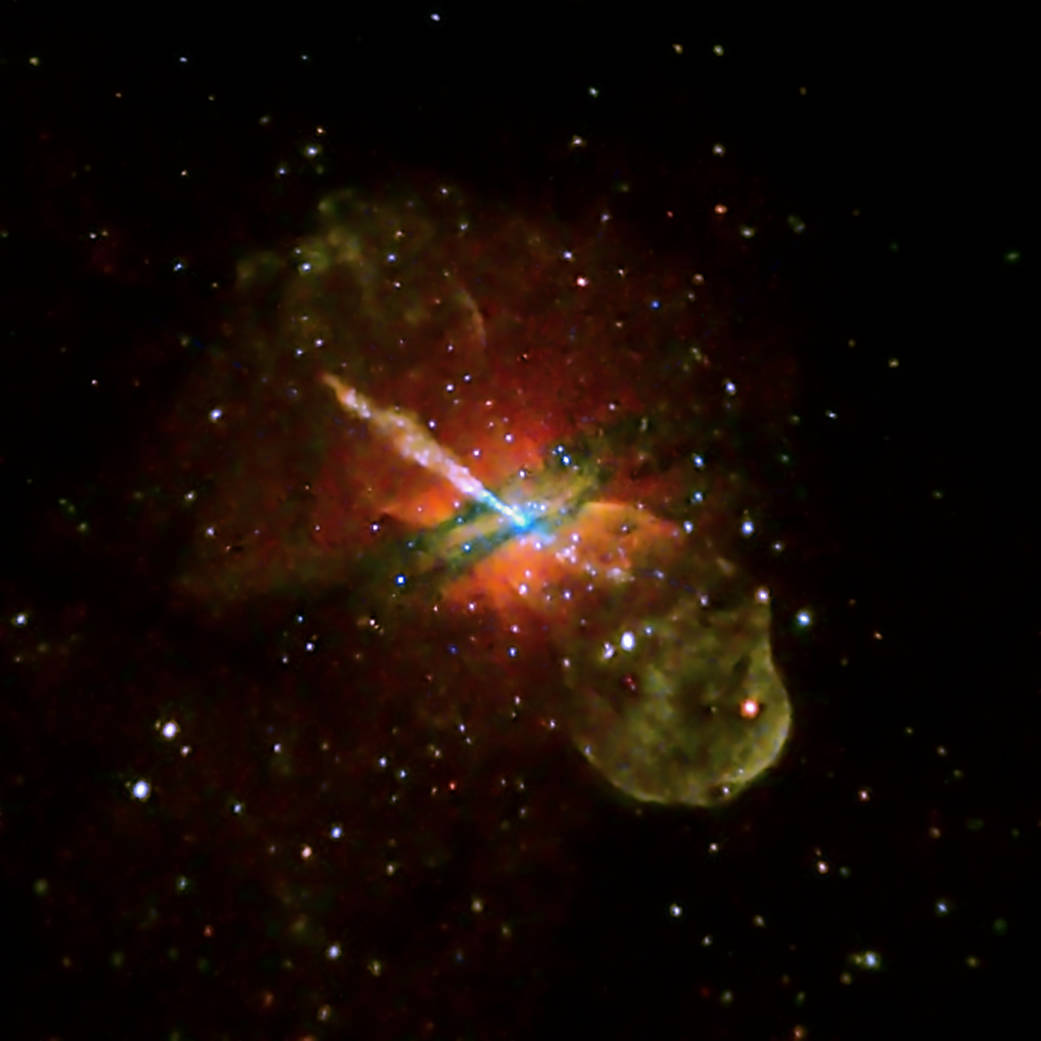
A dramatic new Chandra image of the nearby galaxy Centaurus A provides one of the best views to date of the effects of an active supermassive black hole. Opposing jets of high-energy particles can be seen extending to the outer reaches of the galaxy, and numerous smaller black holes in binary star systems are also visible.
The image was made from an ultra-deep look at the galaxy Centaurus A, equivalent to more than seven days of continuous observations. Centaurus A is the nearest galaxy to Earth that contains a supermassive black hole actively powering a jet.
A prominent X-ray jet extending for 13,000 light years points to the upper left in the image, with a shorter “counterjet” aimed in the opposite direction. Astronomers think that such jets are important vehicles for transporting energy from the black hole to the much larger dimensions of a galaxy, and affecting the rate at which stars form there.
High-energy electrons spiraling around magnetic field lines produce the X-ray emission from the jet and counterjet. This emission quickly saps the energy from the electrons, so they must be continually reaccelerated or the X-rays will fade out. Knot-like features in the jets detected in the Chandra image show where the acceleration of particles to high energies is currently occurring, and provides important clues to understanding the process that accelerates the electrons to near-light speeds.
The inner part of the X-ray jet close to the black hole is dominated by these knots of X-ray emission, which probably come from shock waves – akin to sonic booms – caused by the jet. Farther from the black hole there is more diffuse X-ray emission in the jet. The cause of particle acceleration in this part of the jet is unknown.
Hundreds of point-like sources are also seen in the Chandra image. Many of these are X-ray binaries that contain a stellar-mass black hole and a companion star in orbit around one another. Determining the population and properties of these black holes should help scientists better understand the evolution of massive stars and the formation of black holes.
Another surprise was the detection of two particularly bright X-ray binaries. These sources may contain stellar mass black holes that are unusually massive, and this Chandra observation might have caught them gobbling up material at a high rate.
In this image, low-energy X-rays are colored red, intermediate-energy X-rays are green, and the highest-energy X-rays detected by Chandra are blue. The dark green and blue bands running almost perpendicular to the jet are dust lanes that absorb X-rays. This dust lane was created when Centaurus A merged with another galaxy perhaps 100 million years ago.
This research was presented at the American Astronomical Society meeting on January 9th by Gregory Sivakoff (The Ohio State University). Other team members include Ralph Kraft (Harvard-Smithsonian Center for Astrophysics), Martin Hardcastle (University of Hertfordshire), Diana Worrall (University of Bristol), and Andres Jordan (Smithsonian Astrophysical Observatory). NASA’s Marshall Space Flight Center, Huntsville, Ala., manages the Chandra program for the agency’s Science Mission Directorate. The Smithsonian Astrophysical Observatory controls science and flight operations from the Chandra X-ray Center in Cambridge, Mass.
Additional information and images are available at:
https://www.nasa.gov/chandra/
and
https://chandra.harvard.edu
Image credit: X-ray: NASA/CXC/CfA/R.Kraft et al Radio: NSF/VLA/Univ. of Hertfordshire/M.Hardcastle et al. Optical: ESO/VLT/ISAAC/M.Rejkuba et al.
























